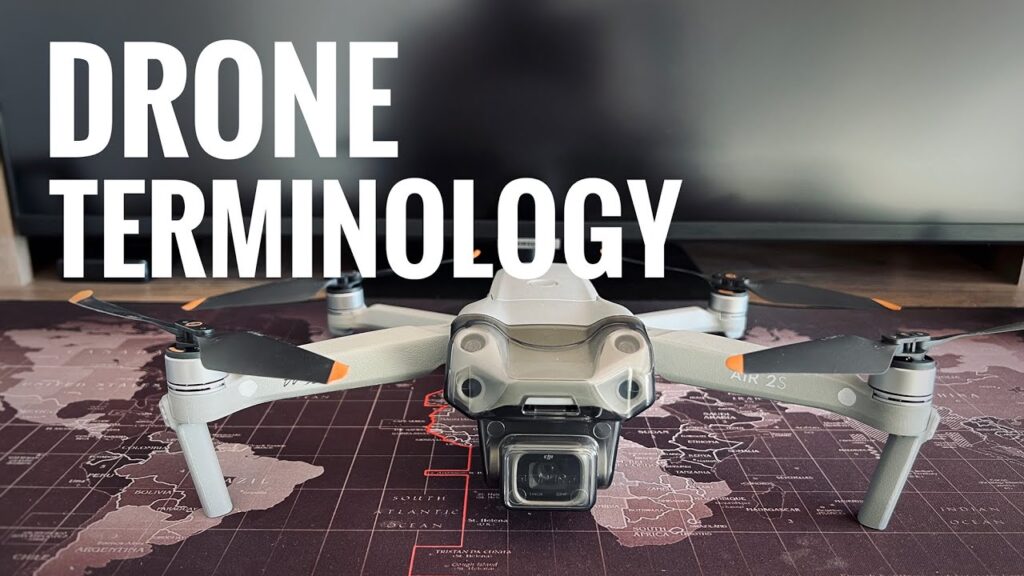Decoding the Skies: Your First Step into Drone Jargon 🚀
Stepping into the world of drones opens up a fascinating new perspective, literally! But before you can truly command these aerial marvels, you’ll encounter a whole new vocabulary. Think of it as learning the language of flight, one crucial term at a time. Like any specialized field, drones have their own unique jargon, and for newcomers, this can feel like trying to decipher air traffic control chatter. That’s where resources like the YouTube video, "Drone terminology for newbies," come in. This seemingly simple title hints at a fundamental need: a clear, concise introduction to the basic building blocks of drone communication. While the video, created by a photographer and videographer, offers a visual lens on this terminology, understanding these foundational terms is critical for everything from safe operation to grasping more advanced concepts down the line. It’s about moving from being a passive observer to an informed, capable pilot, ready to interpret the technical whispers of your aircraft.
Key Drone Terminology Unpacked
From the insights gleaned from the YouTube video "Drone terminology for newbies," here are some crucial terms to get you started:
- Drone (or UAS/UAV): At its simplest, this refers to the uncrewed aircraft itself. While "drone" is the common term, you’ll often hear UAS (Unmanned Aircraft System), which includes the aircraft, the ground control station, and the communication links. Think of the drone as the bird, and the UAS as the entire system allowing you to fly it.
- Gimbal: Imagine trying to take a smooth video while walking down a bumpy road. That’s where the gimbal comes in. It’s a pivoted support that allows the camera to remain stable and level even when the drone is tilting or moving. Visually, it’s the often intricate-looking piece holding the camera underneath the drone.
- FPV (First-Person View): This is like being in the cockpit, even when you’re on the ground. FPV uses a camera on the drone to transmit a live video feed to a screen or goggles, giving you a pilot’s-eye view. It transforms the experience, making you feel like you’re soaring through the air.
- VLOS (Visual Line of Sight): This is a fundamental safety regulation. VLOS means keeping your drone within your unaided visual range at all times. You need to be able to see the drone with your own eyes (corrective lenses are permitted). This ensures you can maintain awareness of its surroundings and avoid potential hazards. Think of it as keeping your aerial companion within sight, like a well-trained dog in the park.
- GPS (Global Positioning System): Just like your phone uses GPS for navigation, so does your drone. GPS allows the drone to determine its location accurately, enabling features like autonomous flight modes, return-to-home functions, and stable hovering. It’s the silent navigator guiding your drone through the skies.
Bridging the Gap: From Newbie to Informed Operator
While the video description highlights a photographer’s perspective, understanding these basic terms transcends any single application. Whether you’re capturing stunning aerial photos, conducting inspections, or exploring recreational flight, these terms form the bedrock of your understanding. The concise nature of the video, as suggested by the potentially short duration (PT0M0, though this may be an error in the data), likely focuses on delivering these key concepts directly and efficiently – a crucial approach for beginners who can easily be overwhelmed by technical details. The photographer’s lens also brings a practical, visual element to the learning process. Instead of abstract definitions, you might see these terms in action, helping solidify their meaning. For instance, seeing the gimbal stabilize a shaky video clip can be far more impactful than simply reading a definition. This approach aligns perfectly with the needs of a beginner, grounding abstract concepts in tangible, visual examples.
Your Flight Path Starts Here
Mastering the language of drones is your first critical step towards becoming a confident and competent pilot. Understanding terms like drone, gimbal, FPV, VLOS, and GPS isn’t just about sounding knowledgeable; it’s about grasping the fundamental principles of operation, safety, and control. Think of this as your foundational pre-flight checklist for understanding. Ready to take the next step in your drone journey? Scroll down to explore the video highlights and witness these terms in action.

